#Brooklyn039s #Historic #GreenWood #Cemetery #Offers #Tombs #View
Afternoon picnics were a common activity for American families in the Victorian era, and cemeteries were one of the favorite spots they gathered to spread their blankets and enjoy the day.
That might sound a bit macabre to modern sensibilities, but considering there were no public parks then, it makes perfect sense. For residents of New York, Green-Wood Cemetery was one of the most inviting places to visit dead loved ones in peaceful contemplation and a beautiful, natural landscape.
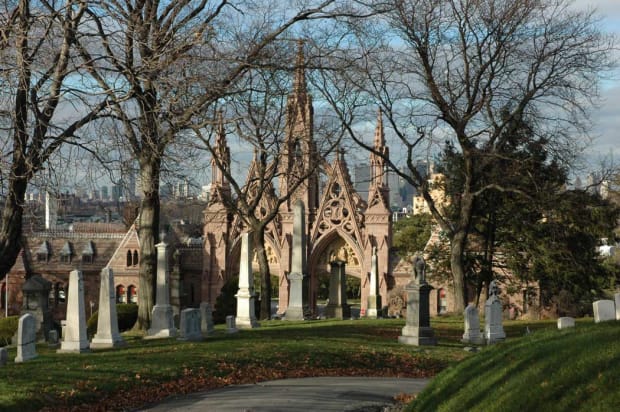
Photo by Art Presson/courtesy The Green-Wood Cemetery
Celebrating its 185th year and now a National Historic Landmark, Brooklyn’s Green-Wood Cemetery opened in 1838. Founded by Brooklynite Henry Evelyn Pierrepont and designed by engineer David Bates Douglass, it was one of the first rural cemeteries in America. It sprawls across 478 acres of maze-like winding walkways, rolling hills and ponds landscaped with exotic trees, shrubs, shady oaks and marine vegetation. Lying on the highest point in Brooklyn, it’s a haven for various birds and wildlife, art lovers, botanists and history buffs.
With all of its crypts and mausoleums, Green-Wood looks like something straight out of Victorian London or Paris, which is by design, as it was inspired by Paris’ Père Lachaise Cemetery and London’s Magnificent Seven gothic-garden cemeteries. Green-Wood was also built on an important historical spot: George Washington’s Battle of Brooklyn, the first major battle of the American Revolution in 1776, in which 1,000 Americans lost their lives.
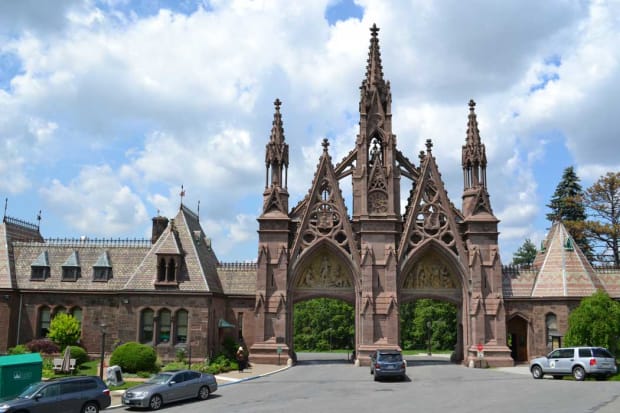
Photo by Art Presson/courtesy The Green-Wood Cemetery
Though today Green-Wood has a strict no-picnicking policy, visitors are still welcome to enjoy the grounds, which boast some impressive features, including the magnificently carved Gothic Revival entrance archways by Richard Upjohn, extraordinary Victorian mausoleums, pyramids and other monuments, the lush Japanese cherry blossom trees that thrive near an ornamental pond, and thousands of other trees, including some of the city’s oldest.
The cemetery became a coveted place to spend the afterlife. By 1870, 150,000 famous and infamous souls were buried there, including former New York governor DeWitt Clinton, who had been moved from a cemetery in Albany; a monument was built in his honor in 1853.
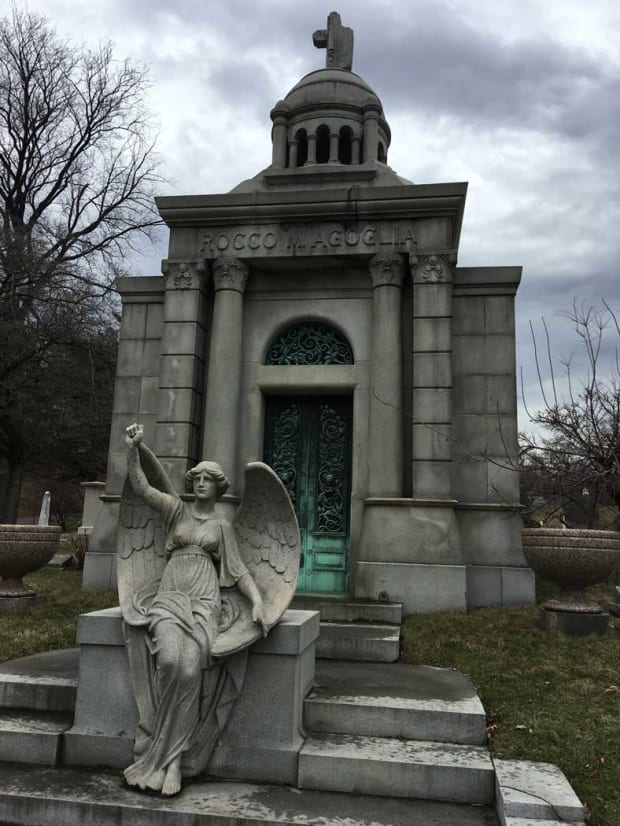
Image courtesy LJ Lindhurst
Equal parts cemetery, park and historical resource, Green-Wood is a popular destination for residents and tourists, who continue to flock there in droves to visit famous graves and participate in various events.
A guided tour is the best way to experience Green-Wood, especially if you love history and storytelling. A tour can take you through the nooks and crannies of the cemetery while providing fascinating insights.
“We try to give tours that include a good mix of nature, architecture and history,” said tour guide LJ Lindhurst. “We also need to package history into fun facts.”
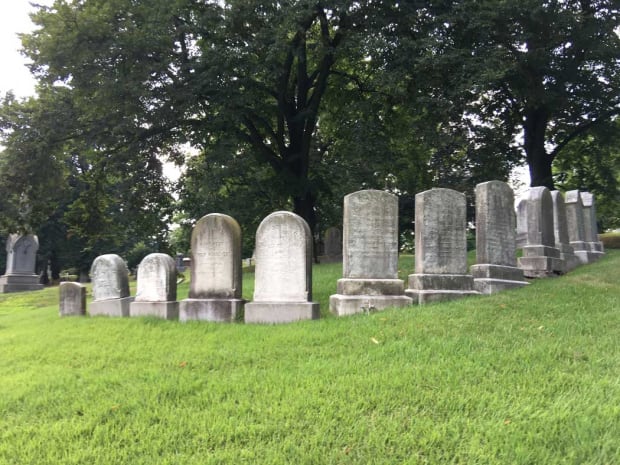
Image courtesy of LJ Lindhurst
After moving across from the cemetery, Lindhurst visited it regularly and eventually started a blog to share interesting stories she discovered on her walks there. Green-Wood later contacted her and asked if she wanted to be a tour guide. She enthusiastically jumped at the chance and has been a dedicated guide for seven years.
Lindhurst loves discovering graves she’s never seen and researching the person buried there. A recent find was Harold Hartshorne, one of the victims of the 1961 US Skating Team Disaster. Hartshorne had been an Olympic ice skater, and upon retirement became a skating judge. The entire team, including judges, coaches and family, was killed when their plane crashed on February 15, 1961, on their way to Prague for the World Championships.
Today Green-Wood is the final resting place of close to 600,000. Other notables include Horace Greeley, Samuel Morse, F. A. O. Schwarz, William and Henry Steinway, Louis Comfort Tiffany, and Boss Tweed, along with numerous artists, baseball greats, Civil War generals, entertainers, inventors and politicians.
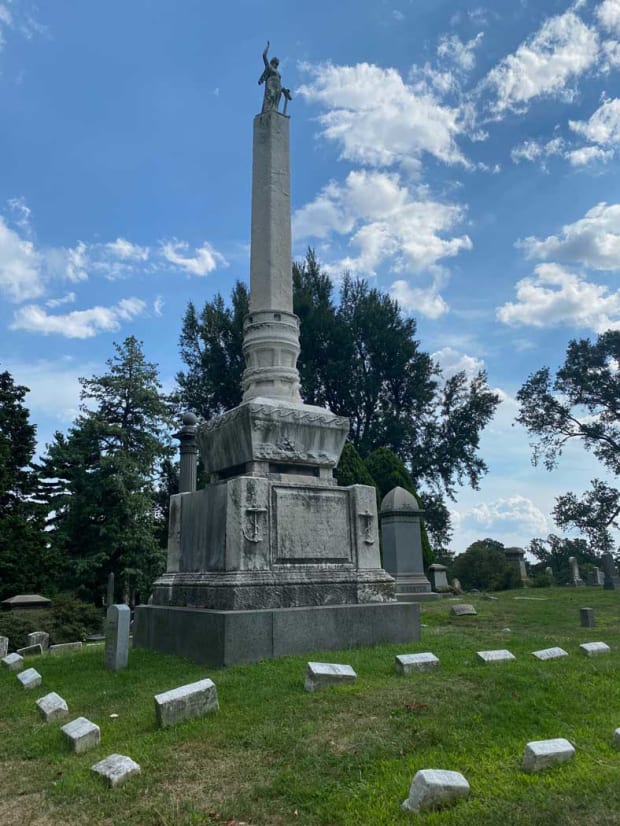
Image courtesy LJ Lindhurst
Lindhurst said two of her favorite people buried there, and among the most popular with visitors, are composer and conductor Leonard Bernstein and artist Jean-Michel Basquiat, who died in 1988 when he was only 27. An untitled Basquiat painting sold for $110.5 million in 2017. His art remains highly valuable and sought after by fine art collectors.
“A lot of people want to see Jean-Michel Basquiat. They leave paintings, letters, little bottles of booze and some weird things,” she said.
Not all of Green-Wood’s permanent residents are deceased, however. Since the 1960s, the cemetery has been home to monk parrots from Argentina that live in large nests at the entrance archways.
Lindhurst said these unusual and exotic residents delight most people probably more than anything else. How they made their way from South America to Brooklyn is what Lindhurst likes to call a “so the story goes” story, meaning it may or may not be true. The parrots supposedly escaped from a cargo crate at JFK Airport and settled in different parts of Brooklyn, including Green-Wood, where around 75 now live on the top spires of the archways.
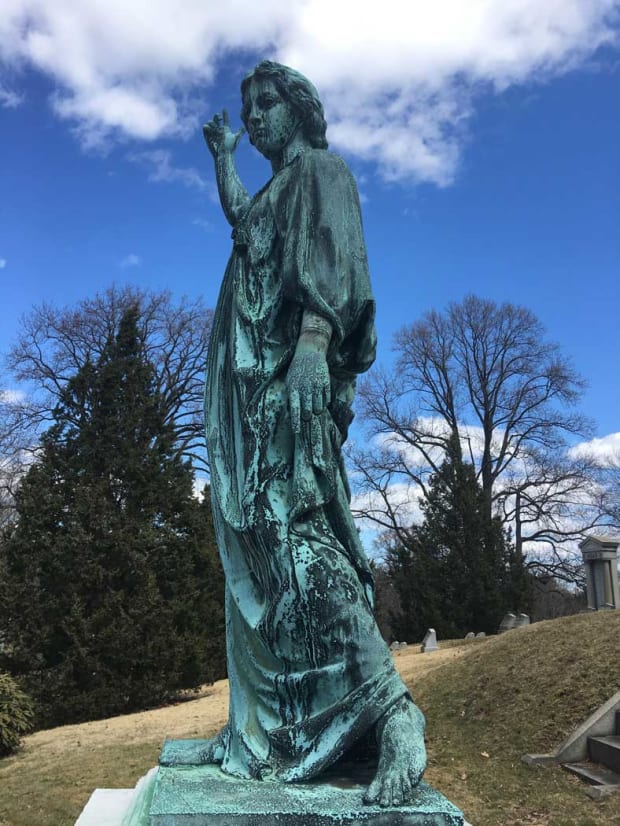
Image courtesy of LJ Lindhurst
“They serve an important ecological benefit. They keep the pigeons away, and they keep their environment clean,” Lindhurst noted.
Green-Wood is a bird watcher’s paradise. Besides the famous parrots, the cemetery’s berry bushes, fruit trees, old maples, and ponds attract all kinds of species, including bluebirds, hawks, ducks, geese, grosbeaks, egrets, herons, orioles, owls, tanagers, warblers and woodpeckers.
Another big draw is one of the cemetery’s oldest features dating to the 1850s: the thirty catacombs built into the side of a hill when above-ground burial was fashionable. Lit by skylights, they were also designed to quell Victorians’ fear of being buried alive.
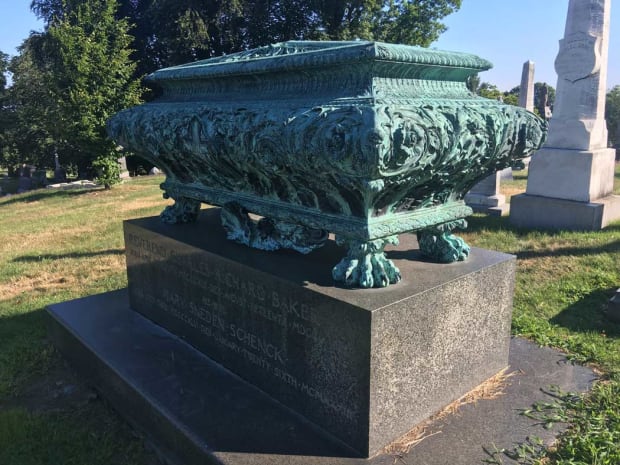
Image courtesy LJ Lindhurst
One of the most famous people buried in the catacombs is Ward McAllister. He and Caroline Astor famously helped define New York’s high society during the Gilded Age with their exclusive list, “The 400,” which included the most fashionable and elite.
Lindhurst said the catacombs are only open to the public for periodic tours and music concerts. “There are original pieces of music specifically written to be performed in the catacombs because of the awesome acoustics,” she said.
New York’s history is rolled out for visitors in Green-Wood’s hillside burials and grassy plots and monuments that honor victims of disasters, but it’s easy to forget significant tragedies that happened there besides the September 11 terrorist attacks. Lindhurst and other guides play an essential role in keeping that history alive, including the Brooklyn Theatre Fire in 1876 that killed more than 278 people, 103 of whom are buried in Green-Wood under an obelisk, and the 1960 Park Slope plane crash that killed 128.
One of the stories Lindhurst will tell in her upcoming “Crimes and Catastrophes” tour concerns the fire in 1904 aboard the General Slocum passenger steamboat that killed more than 1,000. There have been varying accounts of how the fire started, but it spread rapidly. Tragically, the life preservers on the boat were only decorative, and women, wearing their heavy wool suits, sank in the East River. Forty-six identified victims are buried at Green-Wood.
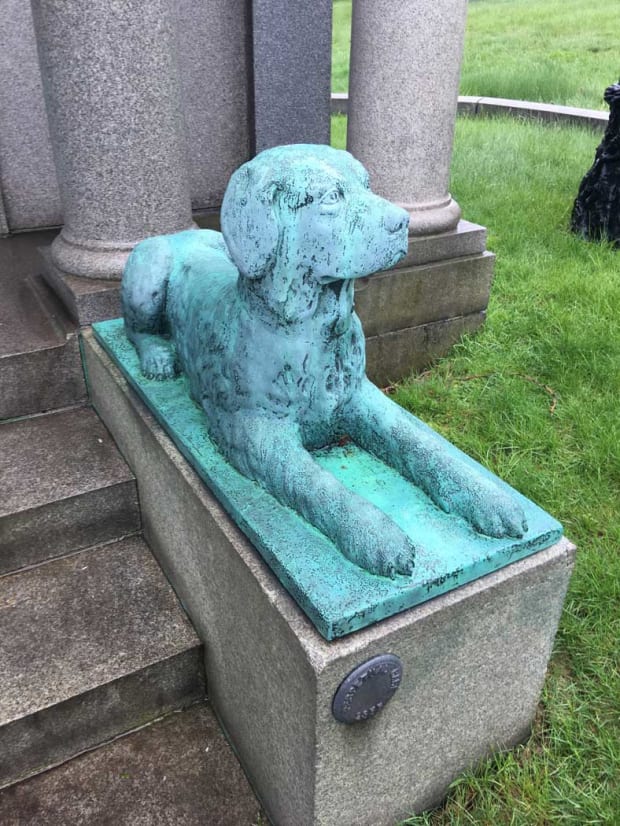
Image courtesy of LJ Lindhurst
“Other than 9/11, this was the biggest disaster in New York. A whole community of Germans was wiped out. It happened during the day when the men were at work, and so it was mostly women and children who died,” Lindhurst said.
Lindhurst loves the rich history and architecture of Green-Wood, but its beauty, in general, is her favorite thing about it.
“It’s just incredible. We always joke, ‘OK, Green-Wood, you overachiever.’ Around every corner, there’s something beautiful to see,” she said.
For more on The Green-Wood Cemetery, visit www.green-wood.com. For fascinating stories LJ Lindhurst has uncovered while wandering around the cemetery, visit her blog at www.losttosight.com.
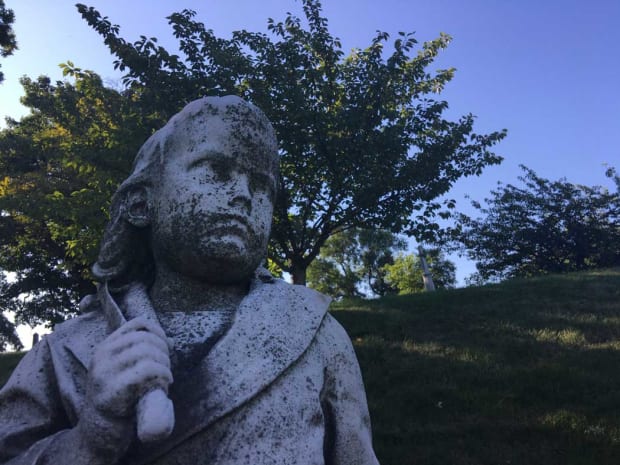
Image courtesy of LJ Lindhurst
